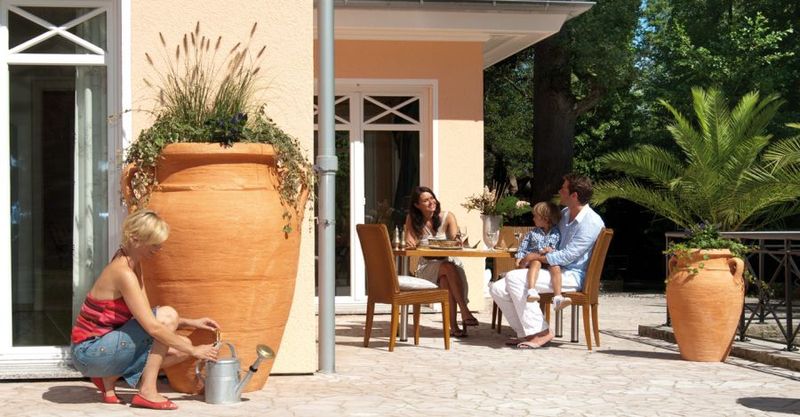Water butts are incredibly useful. They’re used to collect rainwater and hold that water for use across the garden. Since you’re storing it and not having to access the mains (which would probably spike up the water bills!), this way of watering your garden or using it to clean the outdoor space is also brilliantly cost-effective too! With so many new designs, they can also blend in with your garden aesthetics to avoid being a bulky visual piece.
Not convinced? Read on to learn more about them and why a water butt is valuable when installed on a property. You can also learn more about water butt sizes, why they differ from water tanks and more.
Table of contents
- What is a water butt?
- Why install a water butt?
- What are the water butt regulations?
- How much water does a rainwater tank save?
- What size water butt do I need?
- Water-butt-sizes
- Water tank sizes
- How do you divert rainwater into a water butt?
What is a water butt?
A water butt, or water tank if exceptionally large, collects rainwater via the downpipe on a home. The downpipe will be attached to the guttering via a rainwater diverter.
Note: You might need to move the downpipe or one if it isn’t in place before the water butt.
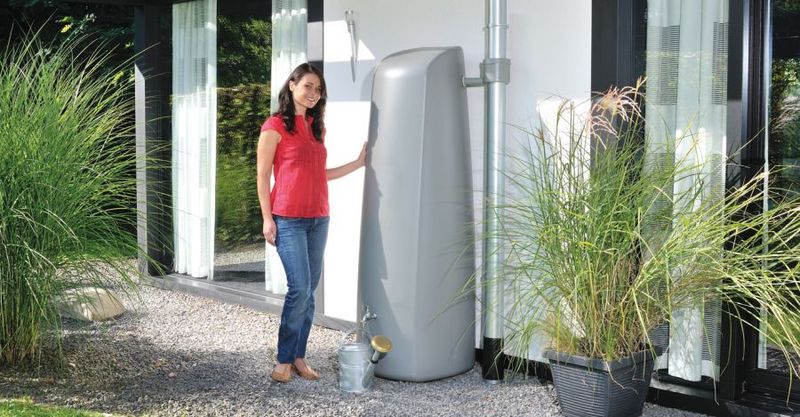
Why install a water butt?
There are many reasons why a water butt is a valuable commodity for any property, private or otherwise. Here are some reasons why installing a water butt would be ideal:
Rainwater collection
Collecting rainwater via a water butt is simple and effective. It’s easy to access, too. So, you’re doing your bit for the environment by using less water from the mains system of the property.
Lower water bills
Since you’re using less water from the mains and instead obtaining it from a source, i.e., the rain, you’re likely to decrease hefty water bills. Instead, use rainwater to feed plants in or outside of the house.
Filled with nutrients
Rainwater has all the nutrients plants need. This means you can happily water your plants with the knowledge they’re getting the care they need.
Water butt planters
Some water butts also work as planters. This is a very specific style of water butt which can make it a rare find. With that said, they are available, meaning you can have a new water butt for the intended use and place flowers or other plants on the top to create a gorgeous new garden feature.
This is also a good solution if you don’t have the space for a flower bed.
Plenty of design choices
Some types of water butt can be statement pieces outside the home. Either designed as Grecian-style pots or even with the appearance of a wall. These are perfect for people who want something less typical than traditional water butt designs.
Hose pipe ban? Not your problem!
We’ve all been there. Hot weather comes around, and the council has decided now is the time – for a hosepipe ban. With a water butt, you can stock up on water to use across your garden even if a hosepipe ban is in place.
Note: Make sure to clean your water butt at least once a year with a safe treatment to reduce the appearance of bacteria and ensure it continues to last for a lengthy period.
What are the water butt regulations?
It’s no surprise that water supply regulations are in place. This ensures the water is safe, concerning things such as how it is managed, used and sourced.
The Water Supply (Water Fittings) Regulations 1999 dictates what you must follow when installing a water butt on your property. This can include information that is not limited to:
- The requirements for the water fittings
- The water systems design and installation
- Water for outside use and much more.
How much water will I save?
Ofwat recommend water butts and water tanks as part of their water-saving tips; with good reason too!
According to statistics, we can save about 50% on our water bills just by using rainwater collected from the roof by a water tank every year. Some studies have found as much as 24,000 litres or more can be saved and reused to support a garden.
The amount you save will depend on the size of the water butt you have. A water tank will typically be much larger than a water butt. So, check you have the right one for your watering and outdoor cleaning needs.
What size water butt should I install?
A water butt can save water, but depending on the usage, you may not need to fork out a grand amount. You’ll also want to consider how the water butt will look when sitting outside the property.
Below are some checklist-style points to help you decide on the size of the water butt you will need.
How will you use the water butt?
Do you want to use it for a big patch of plants or just one section for growing vegetables? Perhaps you want to use it to rinse off paving stones or furniture in the garden.
There are many uses when it comes to water for your garden. Know where you’ll spend the water before choosing your water capacity.
What does a water butt look like?
Water butts don’t have to be bulky, plain designs anymore. You can opt for larger or smaller options if needed, but it’s worth checking which will look more flattering outside the home.
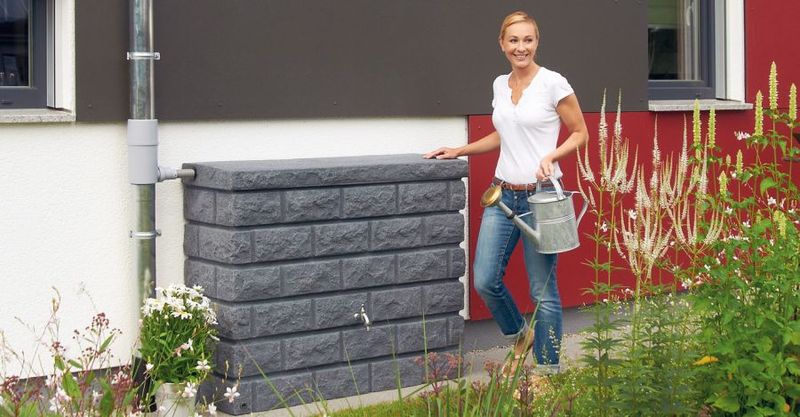
What material should my water butt be?
Whichever water butt you choose, you’ll mostly find them made from a plastic material because it can withstand different weathers more successfully and it’s also much easier to clean.
Having said that, you must check the plastic quality. Lower quality plastic is more likely to get damaged quicker than a higher plastic quality water butt.
What colour water butt do I want?
Common water butt colours you’ll find are green and grey. However, more colours are available, especially now since the designs are way more outstanding. Unique colours of water butts include, but are not limited to:
- Grey
- Brown
- Red
- Beige
Still not sure what colour you want? Think of it like this.
You have a simple green water butt that completely contrasts with your exterior wall. If your wall is cream-coloured, you could opt for a sand beige water butt in the shape of a column. Alternatively, your property may be more on the rustic side. In this case, you could have a bold brown barrel-shaped water butt.
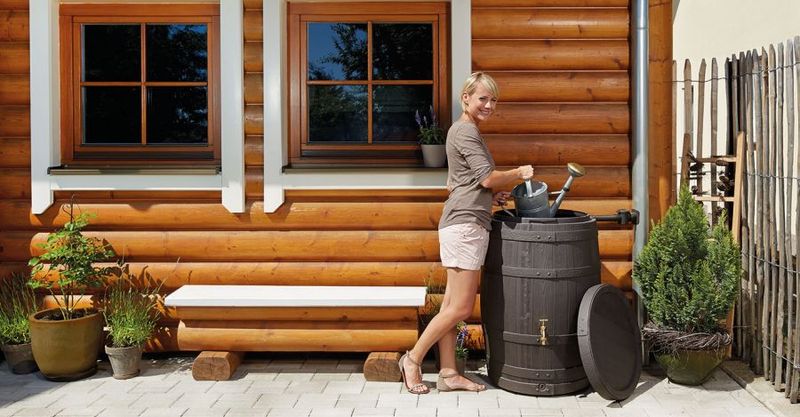
Once you’ve completed your planning, check out what sizes we have to ensure you have the right amount of litres for the jobs ahead.
Water butt sizes
In this section, we are referring to the capacities of the water butts we have available. Water butt kits are available if required.
| Capacity (litres) | Uses |
| 250 | Gardens |
| 300 | Gardens |
| 350 | Gardens |
| 360 | Gardens |
| 400 | Gardens |
| 550 | Gardens |
| 600 | Gardens |
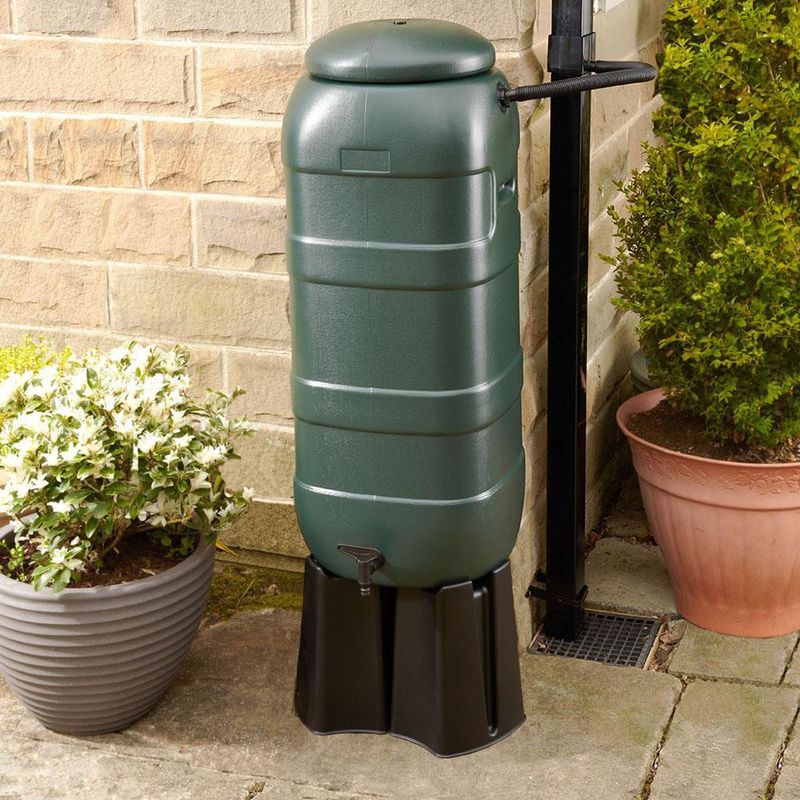
Water tank sizes
| Capacity (litres) | Uses |
| 500 | Gardens |
| 520 | Gardens |
| 750 | Gardens |
| 1500 | Gardens |
| 2000 | Gardens |
| 2350 | Gardens |
| 3100 | Gardens |
| 4600 | Gardens |
| 20000 | Gardens |
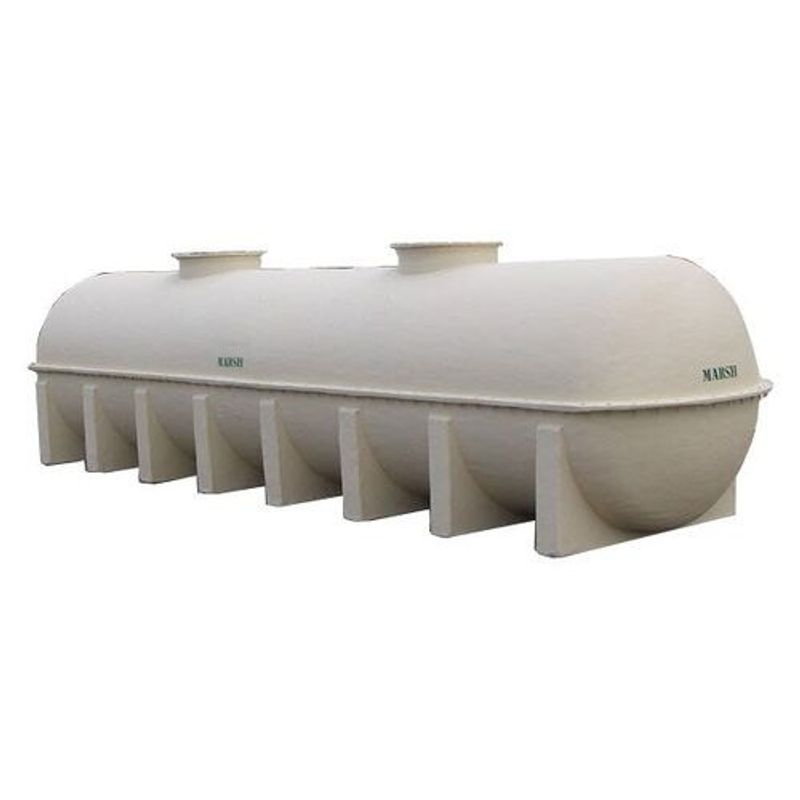
So now you know more about water butts, you can head over to our wide range to discover the different sizes, styles and more about them to find the right one for your requirements.



